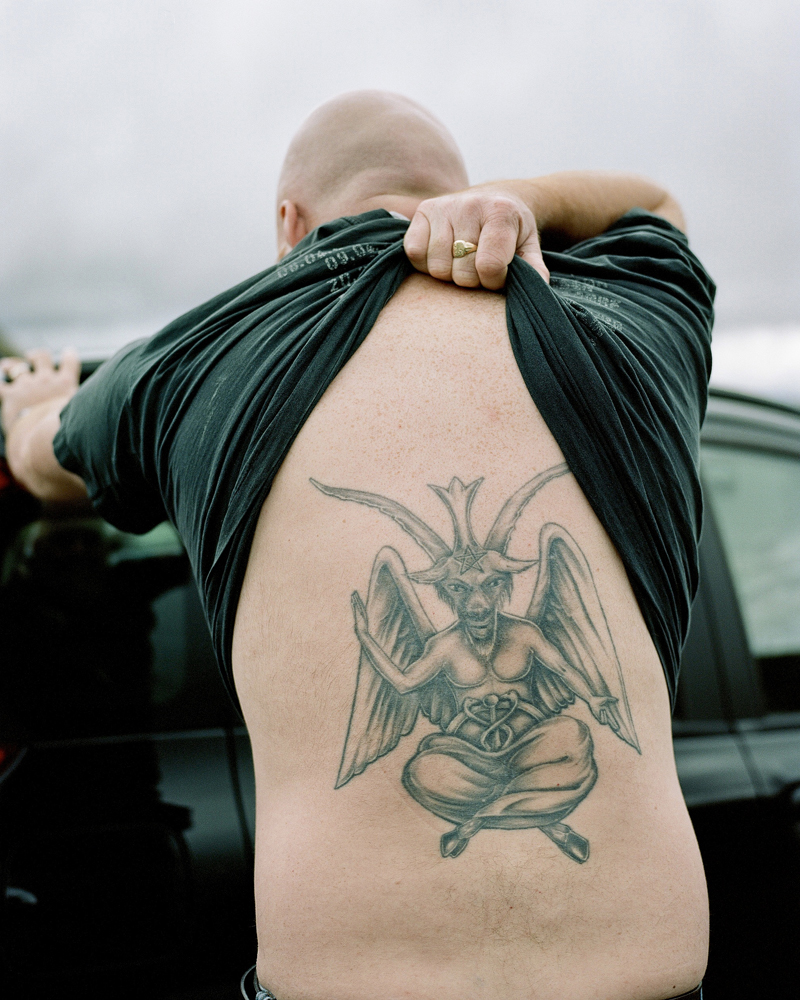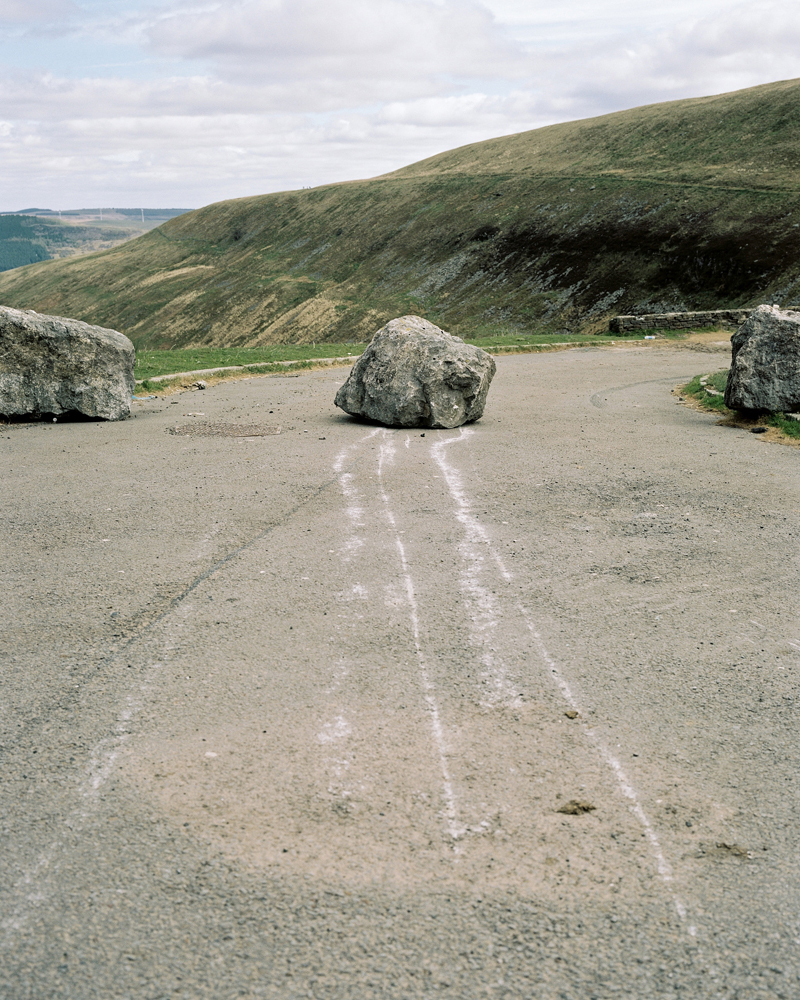Dan Wood – Gap in the Hedge
WORDS BY ALICE ZOO
At the heart of Dan Wood’s project, Gap in the Hedge, there is a tension between the personal and the objective. A documentary project about the journey from Rhondda Valley to Bridgend via Bwlch-y-Clawdd (a mountain pass, the titular gap in the hedge), Wood adopts the language and visual tropes of the kind of American road trip photography and subjective documentary made popular by the likes of Alec Soth — lone figures in unusual clothing and sweeping landscapes abound. Springing from the sense of wonderment he felt when he first made the journey as a child in his mother’s car, driving from townscape to jewel-green countryside, the project can’t untangle itself from Wood’s personal history, despite the photographer’s “every effort to photograph objectively and […] feel that personal emotions did not get in the way too much.”
The project opens with a man astride a horse, looking out into the middle distance. Our vantage point is low; in their heroic stance the horse and rider recall illustrations of knights or cowboys, saints in stained-glass windows. In keeping with this prelude, Wood makes frequent reference to mythic imagery throughout the work: a metal gate is painted with a Bible verse (Ephesians 6:12: “For we wrestle not against flesh and blood, but against principalities, against powers, against the rulers of the darkness of this world, against spiritual wickedness in high places.”) A car track forms a circular track on a green patch of land with the eeriness of a crop circle and, later, a man pulls up the back of his T-shirt to reveal a huge Satan tattoo. This is the transformative vision of Wood as a child: he describes how, during the car journeys through the Bwlch with his mother, “it was like we had travelled through a portal into another world.” His project is writ through with this wide-eyed awe.
Aside from the preponderance of the mythic, it is Wood’s feelings at the beginning of the project that speak most to its eventual tone. “My relationship to the place before I started making the work was one of detachment, ambiguity and slight intimidation,” he describes, and these qualities often temper the images. The subjects of Wood’s portraits do not often meet the viewer’s gaze; the couple that do read as quietly suspicious or adversarial. The domestic still lives that punctuate the work have an uncanny element. In an odd kitchen still life, for example, a huge pair of cat’s eyes stare out above the oven, next to a too-large stack of overripe bananas. These scenes are observed by somebody especially sensitised to the strange and unfamiliar. The effect is not intimidating, but it is ill-at-ease; a vision that tallies with Wood’s boyhood feelings of separateness, as well as with the area’s post-mining identity of uncertainty and resignation. In fact, this search for a new and coherent identity unites the soul of the place with Wood himself.
One underpinning motif of the project, however, is presented without that kind of narrative friction. The south Welsh landscape occurs again and again, and Wood presents it to us with confidence, simply, without the lofty awe of mysticism nor the strangeness of unfamiliarity. As a backdrop to a community in a state of existential uncertainty, the landscape is a fixed star, a kind of beauty untouched by time, its wonder irreducible. The project can read as an elegy to the landscape that despite Wood’s complex feelings about his journey between places, and the community’s post-industrial limbo, is depicted as sustaining and benevolent. Wood’s last image shows a track that wends through towards a forest but, by a trick of perspective, seems to end before it gets anywhere, in the mid-ground of the picture. Behind it the landscape waits, patient hills veiled in mist.
Gap in the Hedge is available to preorder here.
www.danwoodphoto.com






